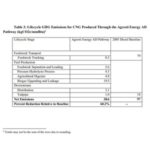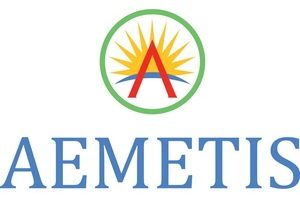EPA approves RFS fuel pathway for Chevron refinery
Energy Disrupter
ADVERTISEMENT
The U.S. EPA has approved a fuel pathway that allows Chevron U.S.A. Inc. to generate D6 renewable fuel renewable identification numbers (RINs) under the Renewable Fuel Standard for several biofuels produced from soybean oil via coprocessing with petroleum at its refinery in El Segundo, California (Chevron El Segundo Soy FFC Pathways). Chevron’s petition, filed in September 2020, originally sought approval for a D5 advanced biofuel pathway. Work by the agency to consider the D5 pathway continues.
According to documents released by the EPA, Chevron petitioned the agency to approve a facility-specific pathway for the generation of D5 RINs for renewable gasoline, renewable gasoline blendstock, renewable jet fuel and nonester renewable diesel fuel produced from soybean oil through co-processing with petroleum feedstocks in the fluid catalytic cracking (FCC) unit of the El Senundo refinery.
As part of its petition, Chevron submitted data to EPA to perform a lifecycle greenhouse gas (GHG) analysis of these fuels produced through the Chevron El Segundo FFC Pathways. The EPA said this analysis involved a straightforward application of the same methodology and much of the same modeling used for the March 2010 RFS rule. The EPA has not previously evaluated soybean oil co-processing in an FCC unit, and aid the primary difference between the Chevron analysis and modeling completed for the March 2010 RFS rule is the consideration of the facility-specific mass and energy balance data for the Chevron El Segundo FCC process.
Based on its assessment, the EPA said that renewable gasoline, renewable gasoline blendstock, renewable jet fuel, and renewable diesel produced through the Chevron Segundo Soy FCC Pathways qualify to generate D6 RINs, provided Chevron adheres to conditions specified by the agency and the fuel meets other definitional and RIN generation requirements for renewable fuel specified by the RFS regulations.
Under the RFS, eligible biofuels must achieve a 20 percent GHG reduction to be eligible to generate D6 RINs. Chevron’s petition requested D5 eligibility, which requires a 50 percent GHG reduction. The EPA said additional review is needed to determine appropriate conditions for D5 RIN eligibility. In the interest of time, the EPA said Chevron asked the agency to move forward with a D6 determination while review of D5 eligibility continues.
A full copy of the EPA’s pathway approval document can be downloaded from the agency’s website.
















